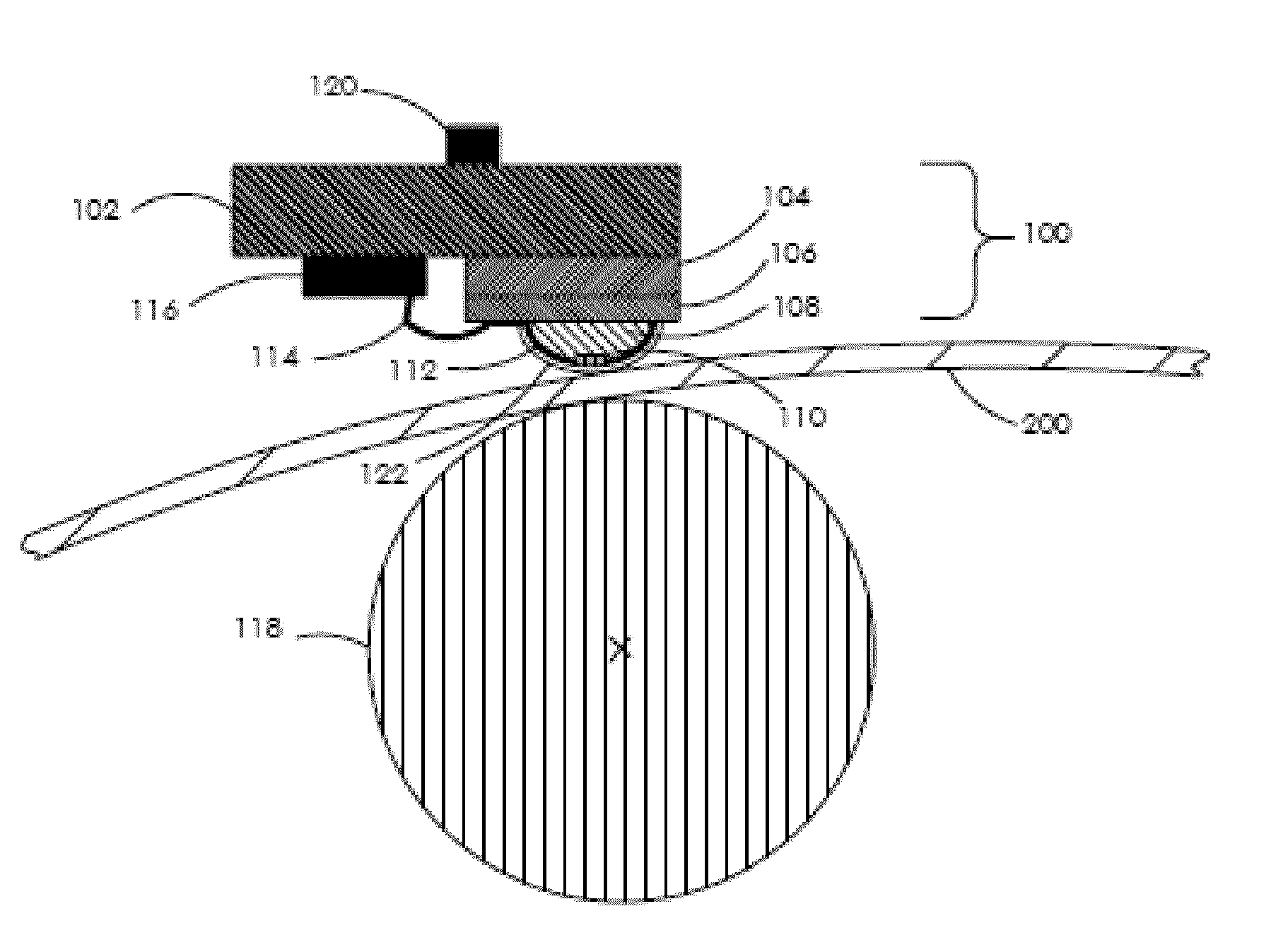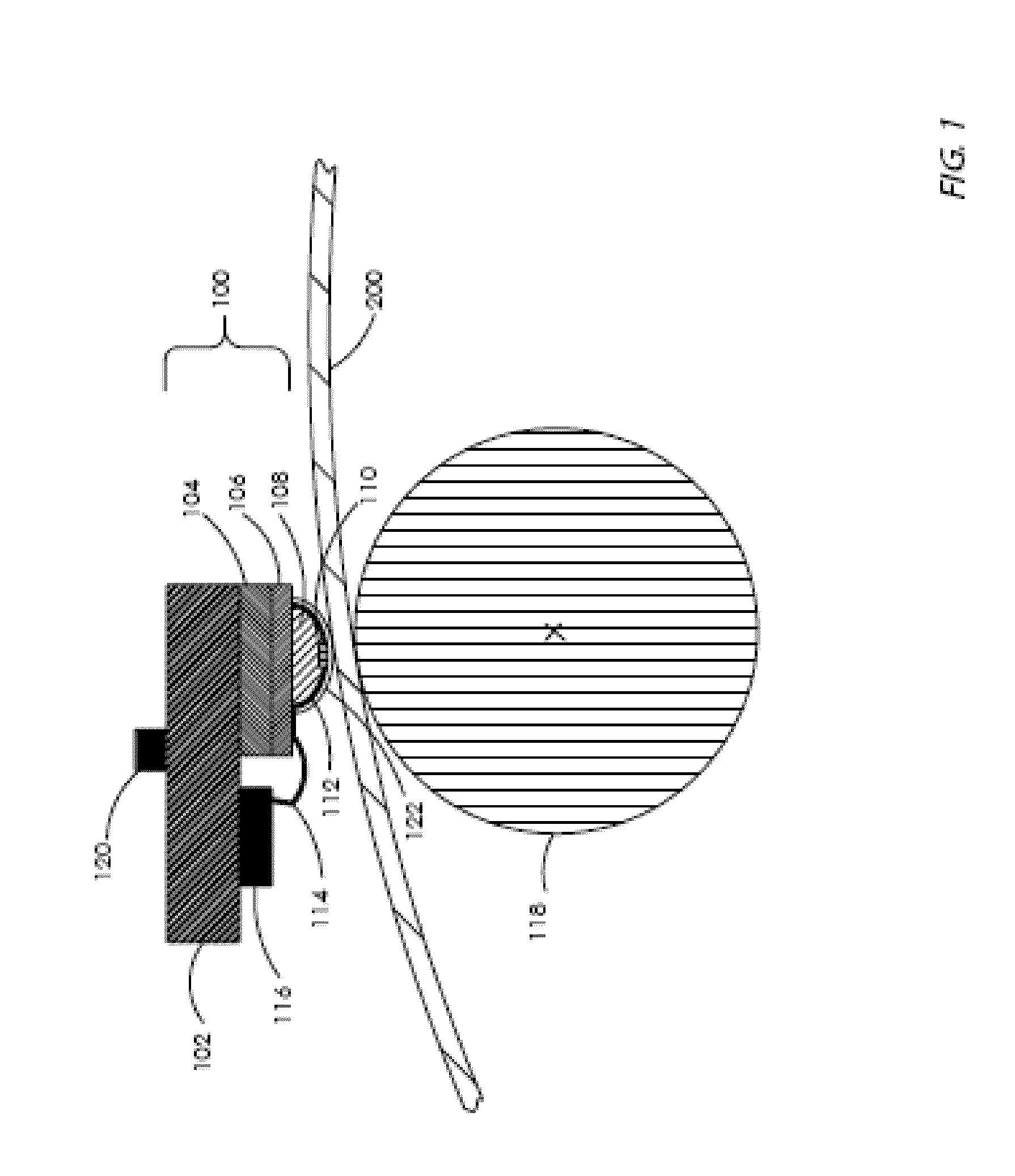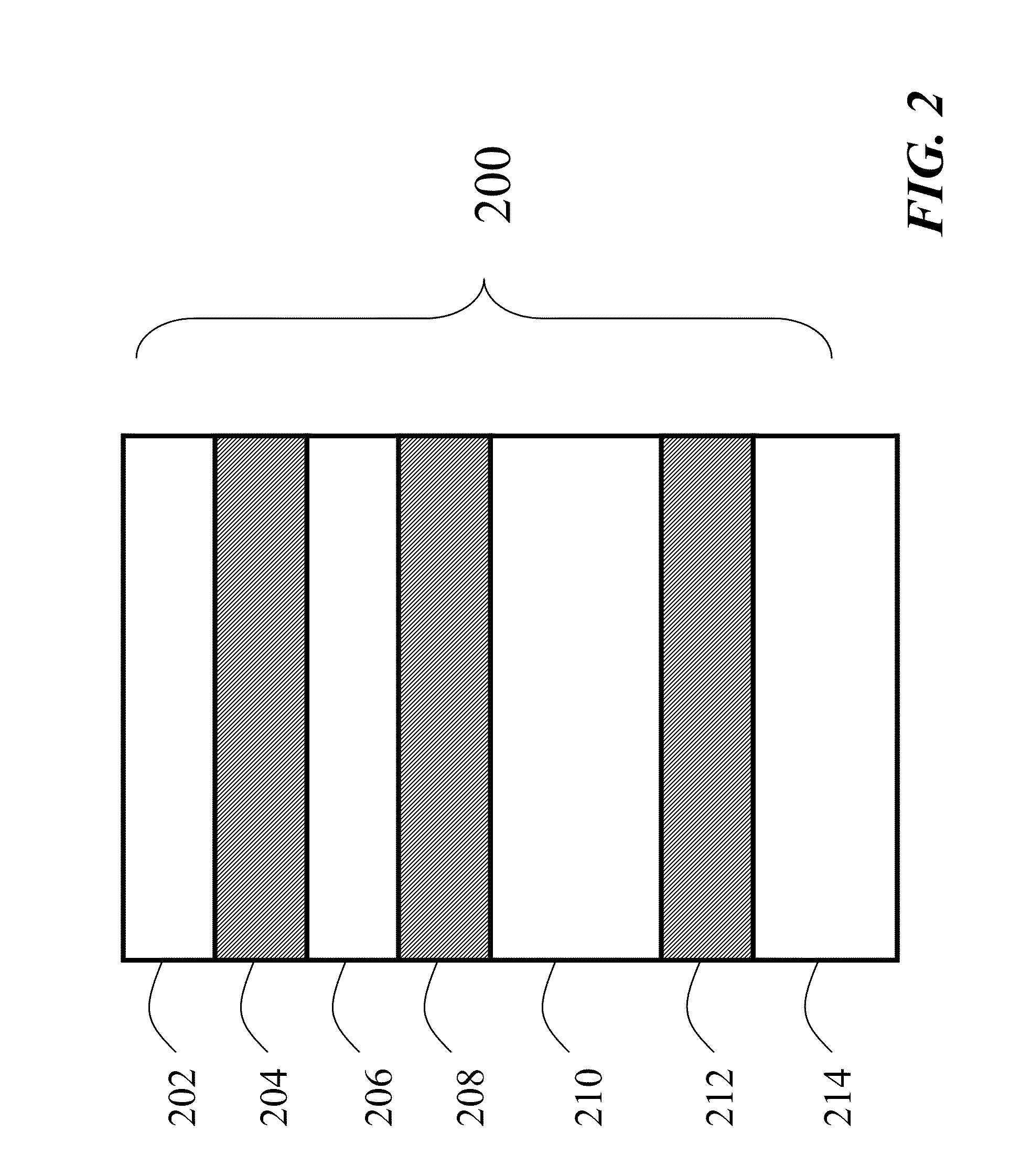Thermal Response Correction System for Multicolor Printing
a multicolor printing and response correction technology, applied in printing and other directions, can solve the problems of reducing the density of the output produced by reducing the efficiency of the print head element, so as to achieve the effect of reducing the differences
- Summary
- Abstract
- Description
- Claims
- Application Information
AI Technical Summary
Benefits of technology
Problems solved by technology
Method used
Image
Examples
Embodiment Construction
[0055]Referring now to FIG. 1, there is seen a schematic, cross-sectional view of a typical thermal printing arrangement in which a thermal printing head 100 and thermal imaging member 200 are held in intimate contact by a platen 118 (that may be a roller (as shown) or a nonrotating element) that biases the thermal imaging member 200 against thermal printing head 100. As shown in FIG. 1, a typical thermal printing head comprises a support 102 that carries both the driving circuitry 116 and the assembly comprising the print head elements. This support 102 comprises a heat sink whose temperature is monitored by a temperature measuring device 120 that may be, for example, a thermistor. The print head elements 110 are carried by a glaze layer 106 in contact with a ceramic substrate 104, and are covered by a thin, thermally-conductive overcoat 122. Ceramic substrate 104 is in contact with support 102. Shown in the figure is an optional raised “glaze bump”108 on which the print head eleme...
PUM
 Login to View More
Login to View More Abstract
Description
Claims
Application Information
 Login to View More
Login to View More - R&D
- Intellectual Property
- Life Sciences
- Materials
- Tech Scout
- Unparalleled Data Quality
- Higher Quality Content
- 60% Fewer Hallucinations
Browse by: Latest US Patents, China's latest patents, Technical Efficacy Thesaurus, Application Domain, Technology Topic, Popular Technical Reports.
© 2025 PatSnap. All rights reserved.Legal|Privacy policy|Modern Slavery Act Transparency Statement|Sitemap|About US| Contact US: help@patsnap.com



